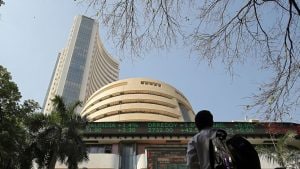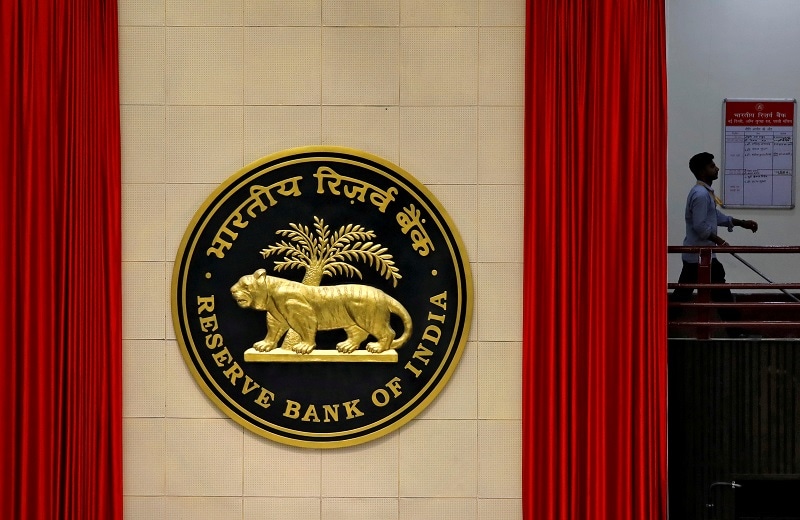‘Dumb money’ is winning in the Indian stock market but it may run out of beginner’s luck

KV Prasad Jun 13, 2022, 06:35 AM IST (Published)
 Listen to the Article (6 Minutes)
Listen to the Article (6 Minutes)
Summary
If you are one of those lucky investors to have got in near the bottom, it may not be a bad idea to take some money off the table.
Every few years, there is a phase in the stock market when the so-called dumb money (retail investors) outshine the highly-regarded smart money (seasoned traders and fund managers). Right now is one such time.
The Sensex and Nifty have rallied nearly 50 percent from the lows touched during the March crash, with mid and small cap shares gaining about as much as measured by their respective indices.
The recovery in stock prices is in stark contrast to the all-round damage to the economy, livelihoods and corporate earnings caused by the COVID-19 pandemic. The GDP is expected to shrink anywhere between 1-5 percent this fiscal depending on who you ask.
The disconnect between the market and the economy is well captured by a quote by Howard Marks, who, in April, commented that “the world is more than 15 percent screwed up” when stock prices had only fallen that much compared to the damage that was emerging.
The market fell a lot more since but has since recovered, and is again only 15 percent away from its all-time highs.
But the disconnect seems to matter little to the new breed of individual investors who according to market pundits, have been largely responsible for driving up stock prices since March.
The theory may have some truth to it. Between March and now, around 3 million trading accounts have been opened at the top five online brokerages led by Zerodha. This is also reflected in the over 2 million new demat accounts with the Central Depository Services (CDSL) and National Securities Depository (NSDL) during this period.
Some market watchers said the V-shaped rebound in stock prices in 2009 amid the global financial crisis would have served as an inspiration to many new investors.
A good indicator of retail interest in the market is the turnover in the cash market.
Daily average traded turnover in the NSE cash segment has shot up since March. For the last fourth months, it has been around Rs 55,000 crore, compared to around Rs 36,000 crore for FY20. In contrast, traded turnover in the derivative segment has not risen by much.
Brokers say that many businessmen who are otherwise casual investors into equities, have been trading quite heavily over the past few months. In the past, this would be seen as a classic sign that the market may be nearing its top. But this time it is not a case of people neglecting their main profession and coming to the stock market in search of easy money.
“The lockdown would have had a role to play in shaping this trend,” Shyam Shekhar, Founder and Chief Ideator, ithought told CNBCTV18.com.
“Because people had nothing much to do, they started speculating in the market. It is a natural human tendency. To the outsider, it always looks like there is easy money to be made in the stock market,” he said.
To be sure, this is not just an Indian phenomenon. In the US, a breed of new entrants called ‘Robinhood traders’ — named after the discount brokerage that his made this form of investing popular — are said to have played a key role in driving up stock prices there.
There could be other factors at play too. Money flows into the stock market through systematic investment plans (SIPs) of mutual funds have been thinning. June in particular saw a precipitous drop in SIP flows.
The reason could partly be due to job losses and pay cuts, leaving many households with less money for investments. Another reason could be that returns from many schemes had been floundering even before the market went into a tailspin in March.
“It is very likely that at least some of the investors may have decided to try their luck by investing directly, since their fund were not performing,” said Sandeep Jain, an ex-portfolio manager and independent market analyst.
“People hear about how others are doing well by investing on their own, and they too are tempted to do the same. And nowadays you are hearing about a lot of people having got lucky with their bets. Yes, dumb money is winning at the moment,” he said.
But for how long is the question.
The last time retail inflows dictated the trend was in the aftermath of demonetization. Inflows into the stock market surged, as many people parked a chunk of their unaccounted money in the stock market, partly through mutual funds and partly through direct investments.
As money gushed in, fund managers had no choice but to deploy it. For the next 20 months or so, there was easy money to be made both by investing directly as well as through mutual funds. But after that, returns shrunk as the market rally became narrow and only a few stocks fared well.
Cut to the present. The so-called dumb money can push prices for some more time, but those who have made outsized gains should keep one eye on exit.
For all the talk about global liquidity, foreign investors have been not been as aggressive in buying Indian equities in a rising market, as they have been while selling in a falling market. Foreign funds net sold over Rs 62,000 crore in March and have bought a little over Rs 36,000 in the following four months.
Domestic mutual funds too appear to be running out of steam. The enthusiasm seen in March when they net bought Rs 28,000 crore is missing. If inflows into SIPs remain anemic, fund managers will not have much money to invest in the market.
And without support from institutional investors, stocks cannot rise beyond a point.
Many stocks may have doubled and trebled from their lows, but with a few exceptions, are not trading much above what they were pre-COVID.
Many investors and market operators are stuck in quite a few mid and small cap stocks, which had been underperforming even when the market was on its way to a new high last year.
Most of these stocks are fundamentally weak, and also happen to be those in which the promoters are known to manipulate the prices in collusion with operators.
Should these stocks rally further, many trapped players may decide to exit, even if it means having to take a small loss.
Smart money can play the waiting game. Already it appears reluctant to chase prices even in quality stocks which it feels could be overvalued.
A majority of the retail investors are betting on the ‘greater fool theory’, or worse, the ‘fear of missing out’, than on an earnings recovery or fundamentals. As long as prices keep rising, newer investors will keep coming in, hoping to make a quick buck, and in the process, providing an exit to the earlier entrants.
If there is some news on a COVID-vaccine breakthrough, the market could rally some more. Other than that, there is little to suggest huge gains from these levels.
If you are one of those lucky investors to have got in near the bottom, it may not be a bad idea to take some money off the table.

Elon Musk forms several ‘X Holdings’ companies to fund potential Twitter buyout
3 Mins Read
Thursday’s filing dispelled some doubts, though Musk still has work to do. He and his advisers will spend the coming days vetting potential investors for the equity portion of his offer, according to people familiar with the matter

KV Prasad Journo follow politics, process in Parliament and US Congress. Former Congressional APSA-Fulbright Fellow










 Listen to the Article
Listen to the Article  Daily Newsletter
Daily Newsletter













